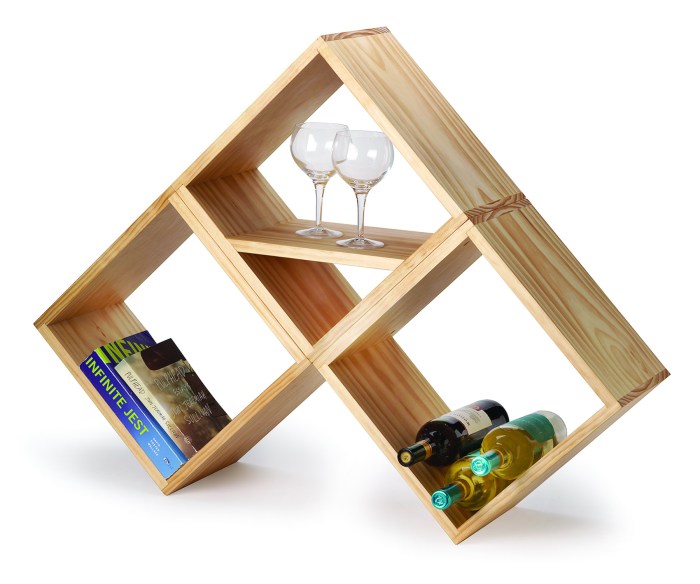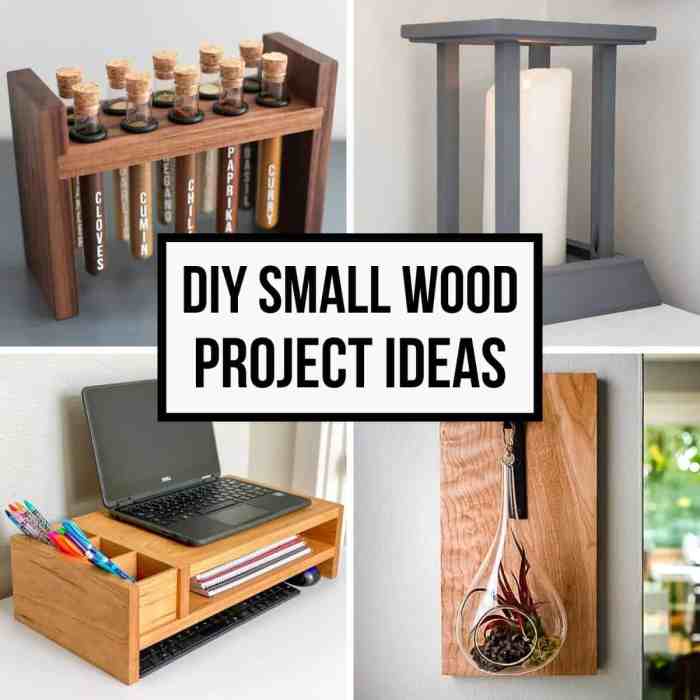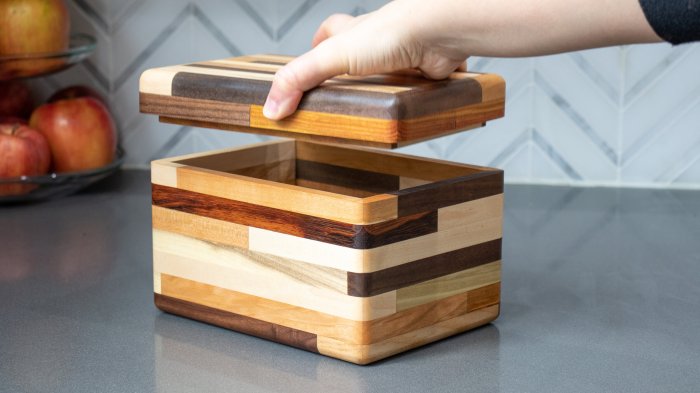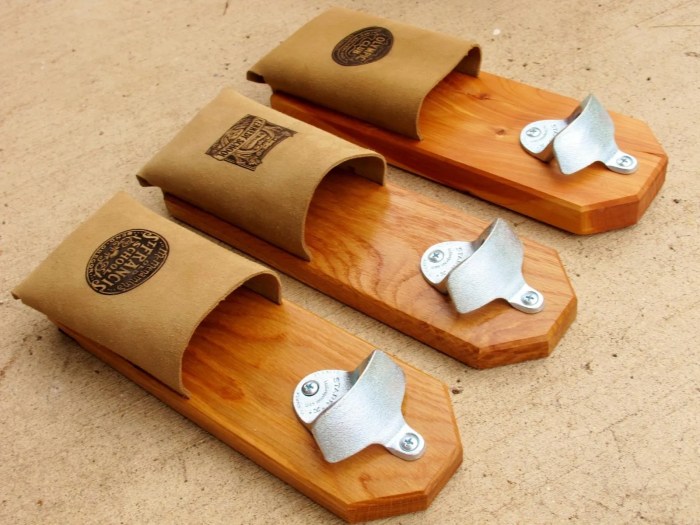Woodworking projects offer a fulfilling and creative outlet, allowing you to transform raw materials into beautiful and functional pieces. Whether you’re a seasoned craftsman or just starting out, the world of woodworking holds endless possibilities. This guide will walk you through the basics of woodworking, from choosing the right tools and materials to mastering essential techniques and finishing your creations with pride.
From simple boxes to intricate furniture, woodworking projects provide a sense of accomplishment and a tangible connection to the craft. We’ll explore various project ideas, discuss planning and design considerations, and delve into the art of creating stunning wood finishes. Get ready to embark on a journey of woodworking exploration and discover the joy of bringing your ideas to life.
Introduction to Woodworking Projects

Woodworking is a rewarding and versatile hobby that allows you to create beautiful and functional pieces for your home, garden, or even to sell. It’s a skill that can be learned at any age and can provide a sense of accomplishment and satisfaction.
Woodworking projects can range from simple to complex, and there’s something for everyone to enjoy. Whether you’re a beginner looking to build a simple birdhouse or an experienced woodworker who wants to tackle a challenging furniture project, there are countless possibilities to explore.
Basic Tools and Materials
Before embarking on any woodworking project, it’s essential to have the right tools and materials. While the specific tools you’ll need will depend on the project you’re undertaking, some basic tools are essential for any woodworker.
- Hand Tools: Hand tools are versatile and can be used for a variety of tasks. Some essential hand tools include a hammer, screwdriver, pliers, tape measure, level, and pencil.
- Power Tools: Power tools can significantly speed up the woodworking process. Some essential power tools include a drill, jigsaw, circular saw, and sander.
- Wood: The type of wood you choose will depend on the project you’re building. Some common woods used for woodworking include pine, oak, maple, and cherry.
- Fasteners: Fasteners are used to join pieces of wood together. Some common fasteners include nails, screws, and glue.
Types of Woodworking Projects
Woodworking projects can be broadly categorized into different types, each offering unique challenges and rewards.
- Simple Projects: Simple woodworking projects are a great way to get started and build your skills. These projects often involve basic cuts, sanding, and finishing. Examples include birdhouses, cutting boards, and picture frames.
- Intermediate Projects: Intermediate woodworking projects require a bit more skill and knowledge. These projects may involve more complex cuts, joinery techniques, and finishing techniques. Examples include bookshelves, coffee tables, and chairs.
- Advanced Projects: Advanced woodworking projects are for experienced woodworkers who want to challenge themselves. These projects may involve intricate designs, custom-made components, and complex joinery techniques. Examples include furniture, cabinets, and musical instruments.
Finishing Woodworking Projects

The final step in any woodworking project is finishing. Finishing not only protects your wood from damage but also enhances its beauty and adds a personal touch. It’s a crucial part of the process, as it can significantly impact the overall look and feel of your project.
Sanding and Surface Preparation
Proper sanding is essential for a smooth and even finish. It helps remove imperfections and creates a surface that will allow the finish to adhere properly. Here’s a step-by-step guide:
- Start with coarse grit sandpaper (80-120 grit): This removes major imperfections and rough spots.
- Progress to finer grits (150-220 grit): This smooths out the surface and removes scratches from the coarser sandpaper.
- Finish with the finest grit (240-400 grit): This creates a very smooth surface that will accept the finish evenly.
Before applying any finish, make sure the wood surface is clean and free of dust or debris. Wipe it down with a tack cloth to ensure a smooth and dust-free surface.
Wood Finishing Techniques, Woodworking project
There are various wood finishing techniques, each with its own advantages and disadvantages. Here’s a breakdown of some common methods:
Staining
Staining is a popular technique for adding color and enhancing the wood’s natural grain. Stains penetrate the wood’s pores, changing its color without obscuring the grain.
- Oil-based stains: These stains are known for their deep penetration and rich color. They are typically slow-drying and can have a strong odor.
- Water-based stains: These stains are easier to clean up and dry faster than oil-based stains. They offer a less intense color and may raise the wood’s grain.
- Gel stains: These stains are thick and creamy, allowing for precise application and minimizing runs and drips. They are suitable for vertical surfaces and offer good color depth.
Painting
Painting is a straightforward way to cover the wood completely and achieve a specific color. It’s a good option for projects where you want a solid color or a unique design.
- Latex paint: This type of paint is water-based, dries quickly, and is easy to clean up. It’s a good choice for indoor projects.
- Oil-based paint: This paint offers better durability and a smoother finish but takes longer to dry and requires solvents for cleanup.
Varnishing
Varnishing provides a protective layer over the wood, enhancing its durability and shine. Varnish creates a hard, glossy finish that resists moisture, scratches, and stains.
- Polyurethane: This type of varnish is known for its durability and water resistance. It comes in both oil-based and water-based formulations.
- Lacquer: This varnish dries quickly and produces a hard, glossy finish. It’s often used for furniture and other high-end projects.
- Shellac: This natural varnish is made from the secretions of a specific insect. It’s known for its amber color and provides a durable, yet breathable finish.
Choosing the Right Finish
The best finish for your project depends on the wood type, the project’s intended use, and your personal preferences.
Wood Type
Different wood types have varying characteristics that influence the best finishing options.
- Hardwoods: These woods are generally denser and more durable, making them suitable for a variety of finishes, including stains, varnishes, and paints.
- Softwoods: These woods are softer and more porous, making them more susceptible to scratches and dents. They are often best finished with a clear varnish or paint.
Project Use
Consider how the finished project will be used to determine the best finish. For example, a table that will be used for dining should have a durable finish that resists scratches and stains.
Personal Preferences
Ultimately, the best finish is the one that you like the most. Experiment with different finishes and techniques to find what works best for you.
Comparing Wood Finishes
Here’s a table comparing some common wood finishes and their properties:
| Finish | Properties | Advantages | Disadvantages |
|---|---|---|---|
| Oil-based Stain | Deep penetration, rich color, slow drying, strong odor | Enhances natural grain, durable finish | Long drying time, strong odor, difficult cleanup |
| Water-based Stain | Less intense color, faster drying, easy cleanup | Faster drying, less odor, easier cleanup | May raise wood grain, less color depth |
| Gel Stain | Thick and creamy, precise application, minimal runs and drips | Suitable for vertical surfaces, good color depth | More expensive than other stains |
| Polyurethane | Durable, water-resistant, available in oil-based and water-based formulations | Durable, water-resistant, protects wood | Can be difficult to apply evenly, long drying time |
| Lacquer | Fast drying, hard, glossy finish | Fast drying, durable, high-gloss finish | Can be difficult to apply, flammable |
| Shellac | Natural varnish, amber color, durable, breathable finish | Natural, durable, breathable finish | Can be expensive, not as durable as other varnishes |
Safety in Woodworking: Woodworking Project

Woodworking is a rewarding hobby, but it’s essential to prioritize safety. Working with sharp tools and powerful machinery can be dangerous if proper precautions aren’t taken. By understanding and adhering to safety guidelines, you can minimize the risk of injuries and enjoy woodworking for years to come.
Common Woodworking Hazards
Woodworking involves several hazards that can cause injuries if not addressed.
- Sharp Tools: Chisels, planes, saws, and other sharp tools can easily cause cuts and lacerations. Always handle them with care, using appropriate guards and keeping your fingers away from the cutting edge.
- Power Tools: Power tools like table saws, routers, and sanders can be dangerous if not used correctly. Ensure the tool is properly assembled, equipped with safety guards, and operated at a safe speed. Always wear appropriate safety gear like eye protection and hearing protection.
- Dust: Wood dust can be harmful to your respiratory system. Use a dust collection system and wear a respirator mask to minimize exposure.
- Heavy Objects: Lifting heavy pieces of wood can strain your back. Use proper lifting techniques and consider using a lifting aid if necessary.
- Fire: Woodworking projects often involve working with flammable materials like wood dust and finishes. Keep a fire extinguisher nearby and be aware of potential fire hazards.
Essential Safety Equipment
Having the right safety equipment is crucial for woodworking.
- Eye Protection: Safety glasses or goggles should always be worn to protect your eyes from flying debris.
- Hearing Protection: Earmuffs or earplugs are essential when using loud power tools.
- Dust Mask: A respirator mask helps protect your lungs from wood dust.
- Gloves: Wear gloves to protect your hands from splinters and cuts.
- Work Boots: Sturdy work boots provide support and protect your feet from falling objects.
Safety Checklist for Woodworking Projects
Before starting any woodworking project, it’s important to follow a safety checklist.
- Clear the Work Area: Ensure your workspace is free of clutter and obstacles to prevent tripping or falling.
- Inspect Tools: Check your tools for damage or wear and tear. Replace or repair any faulty tools before using them.
- Use Proper Guards: Always use safety guards on power tools and keep them in good working order.
- Wear Safety Gear: Don’t skip wearing eye protection, hearing protection, a dust mask, and gloves.
- Avoid Distractions: Concentrate on your work and avoid distractions. Turn off your phone and avoid talking to others while operating power tools.
- Keep a Fire Extinguisher Nearby: Have a fire extinguisher readily available in case of a fire.
Inspiration and Resources

Woodworking is a craft that can be both challenging and rewarding. Whether you’re a beginner or a seasoned pro, there’s always something new to learn and discover. One of the best ways to stay motivated and inspired is to explore the wealth of resources available to woodworkers.
Online Resources
The internet is a treasure trove of woodworking information. There are countless websites, blogs, and forums dedicated to the craft.
- Woodworking Blogs: Blogs are a great way to stay up-to-date on the latest trends and techniques. Many bloggers share their projects, tips, and advice, providing valuable insights into the world of woodworking.
- Woodworking Websites: Numerous websites offer comprehensive information on woodworking, including tutorials, plans, and articles. These resources can be a valuable starting point for learning new skills and expanding your knowledge.
- Woodworking Forums: Online forums provide a platform for woodworkers to connect, share their projects, ask questions, and get advice from other enthusiasts. This community can be a great source of support and inspiration.
Books
Books offer a more in-depth and structured approach to woodworking. There are countless books available covering various aspects of the craft, from basic techniques to advanced joinery.
- Beginner’s Guides: These books provide a solid foundation in woodworking basics, covering essential tools, techniques, and safety precautions. They’re an excellent starting point for anyone new to the craft.
- Specialized Guides: Books focusing on specific areas of woodworking, such as furniture making, turning, or carving, offer detailed information and techniques for mastering those disciplines.
- Project Books: These books contain plans and instructions for a wide range of woodworking projects, from simple birdhouses to complex furniture pieces. They can provide inspiration and guidance for your next project.
Renowned Woodworkers
Many talented woodworkers have inspired generations of craftspeople. Studying their work can provide valuable insights into techniques, design, and craftsmanship.
- Sam Maloof: Known for his elegant and organic furniture designs, Maloof’s work emphasizes the beauty of natural wood and handcrafted details.
- George Nakashima: A pioneer of the “live-edge” movement, Nakashima celebrated the unique character of each piece of wood, creating furniture that reflected the natural beauty of the material.
- Thomas Moser: Moser’s furniture is renowned for its precision, craftsmanship, and timeless elegance. His work embodies the principles of traditional woodworking techniques and modern design.
Woodworking Communities
Connecting with other woodworkers can be a rewarding experience. Local woodworking clubs and online forums provide opportunities to share your passion, learn from others, and participate in workshops and events.
- Local Woodworking Clubs: These clubs offer a chance to meet other woodworkers in your area, share your projects, and participate in workshops and demonstrations. They can be a valuable resource for learning new skills and expanding your network.
- Online Woodworking Forums: These forums provide a virtual space for woodworkers to connect, share their projects, ask questions, and discuss various aspects of the craft. They can be a great source of support, inspiration, and information.
Closing Summary

Woodworking is a rewarding journey that combines skill, creativity, and a deep appreciation for the beauty of natural materials. As you progress, you’ll find that each project presents new challenges and opportunities for growth. Don’t be afraid to experiment, embrace the learning process, and most importantly, enjoy the satisfaction of creating something with your own hands. Whether you’re crafting a simple shelf or a complex masterpiece, the journey of woodworking is sure to leave a lasting impression.
FAQ Explained
What are some basic woodworking tools I need to get started?
Essential tools include a saw, hammer, screwdriver, measuring tape, and a level. You can gradually expand your toolkit as you gain experience.
How do I choose the right wood for my project?
Consider the project’s purpose, desired look, and your budget. Hardwoods are generally stronger and more durable, while softwoods are easier to work with.
What safety precautions should I take when woodworking?
Always wear safety glasses, use proper tools, and work in a well-ventilated area. Avoid loose clothing and keep your workspace clean and organized.
Woodworking projects are a great way to unleash your creativity and build something tangible with your own hands. Whether you’re a seasoned pro or just starting out, understanding the fundamentals of woodwork is essential. From choosing the right wood to mastering basic joinery techniques, there’s a whole world of knowledge to explore in woodworking projects.
